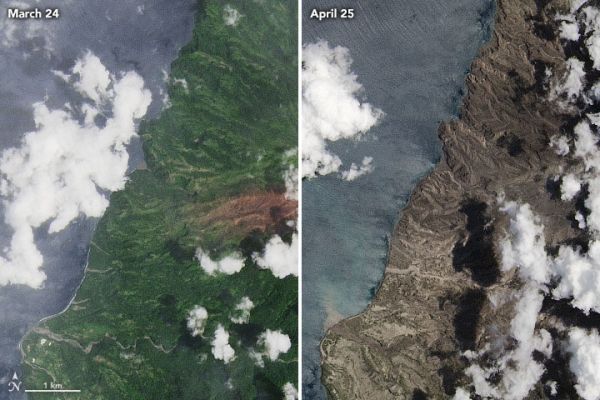Beginning on April 9, 2021, intermittent explosive eruptions from La Soufriére volcano have hurled plumes of ash and gas high into the air above the Caribbean island of Saint Vincent. Although winds have carried some ash plumes great distances, clouds of the tiny pulverized rock and glass shards have also rained down on the island and the Atlantic Ocean.
The fallout has coated large parts of Saint Vincent. The images above, acquired by the Operational Land Imager (OLI) on Landsat 8, show the northwestern part of the island before and after two weeks of powerful eruptions and ashfalls. The brown scar in the vegetation in the image on the left was caused by damage from gases leaked by the volcano before it erupted explosively.
Volcanic ash is quite different than the soft, fluffy material you might find in a fireplace, and the sharp edges and other properties of volcanic particles make them especially problematic. Ash plumes pose a threat to aircraft because the particles can damage jet engines, propellers, and other aircraft systems in ways that can cause them to fail. Roughly ten times denser than snow, ash also can accumulate into heavy layers that can smother crops, collapse roofs, and taint water supplies.
Continue reading at NASA Earth Observatory
Image via NASA Earth Observatory


